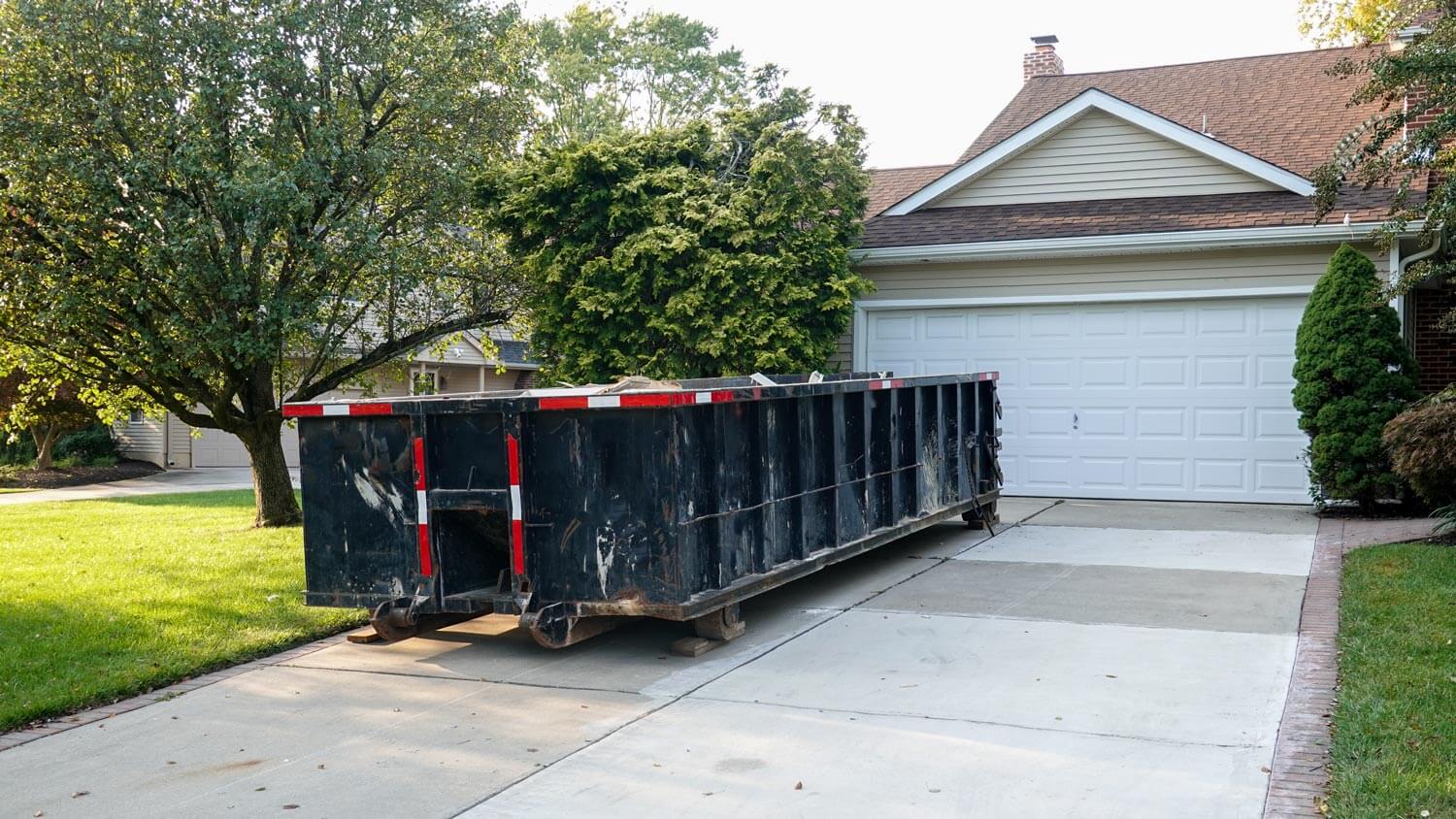
Renting a dumpster is more practical than you think. Use this guide to learn how much your rental will cost, the different dumpster types available, and tips to help you save.
Don’t waste your dumpster rental—use it to its full potential


Dumpsters can accommodate a wide variety of waste and debris, but not everything.
Construction debris, yard waste, and household trash can all be put in a dumpster.
You need to know the dumpster’s weight limit and any prohibited items.
When it’s time to remodel your kitchen, update your landscaping, or declutter your home, renting a dumpster is a convenient way to get rid of large amounts of waste at once. Get the most value out of your rental by learning what you can put in a dumpster—you may be surprised at what you can use it for!
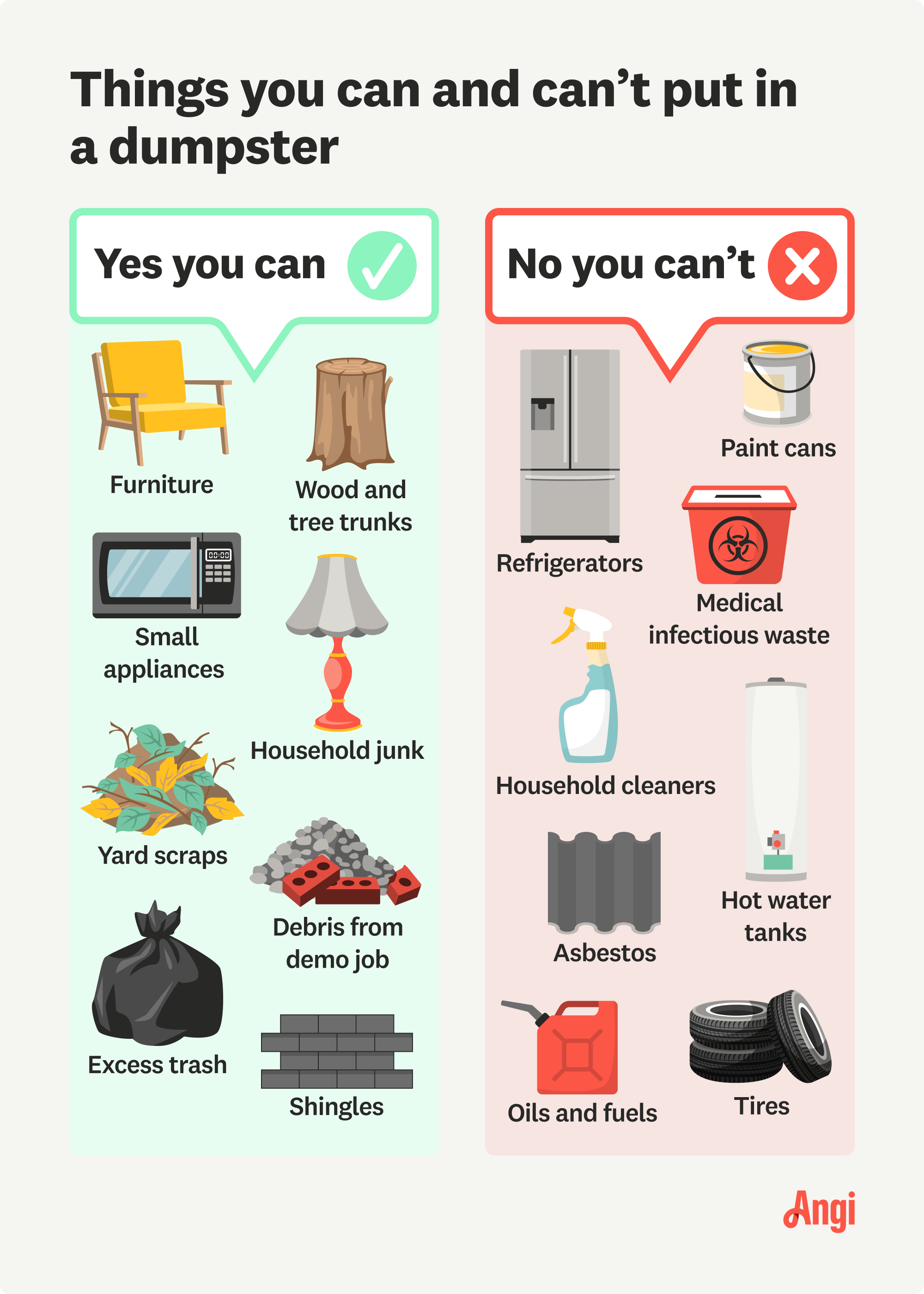
Doing a whole-home cleanout can be extremely satisfying—until you realize you have a pile of discarded items that would require endless trips to the dump to dispose of. Renting a dumpster can save you a lot of time and hassle. Just throw your items into the dumpster and keep working.
You can put all kinds of household waste in a dumpster, including clothing and other textiles, kitchen items, home furnishings, and more. As long as your waste doesn’t include any hazardous or prohibited material, you can throw almost anything from a cleanout in a dumpster rental.
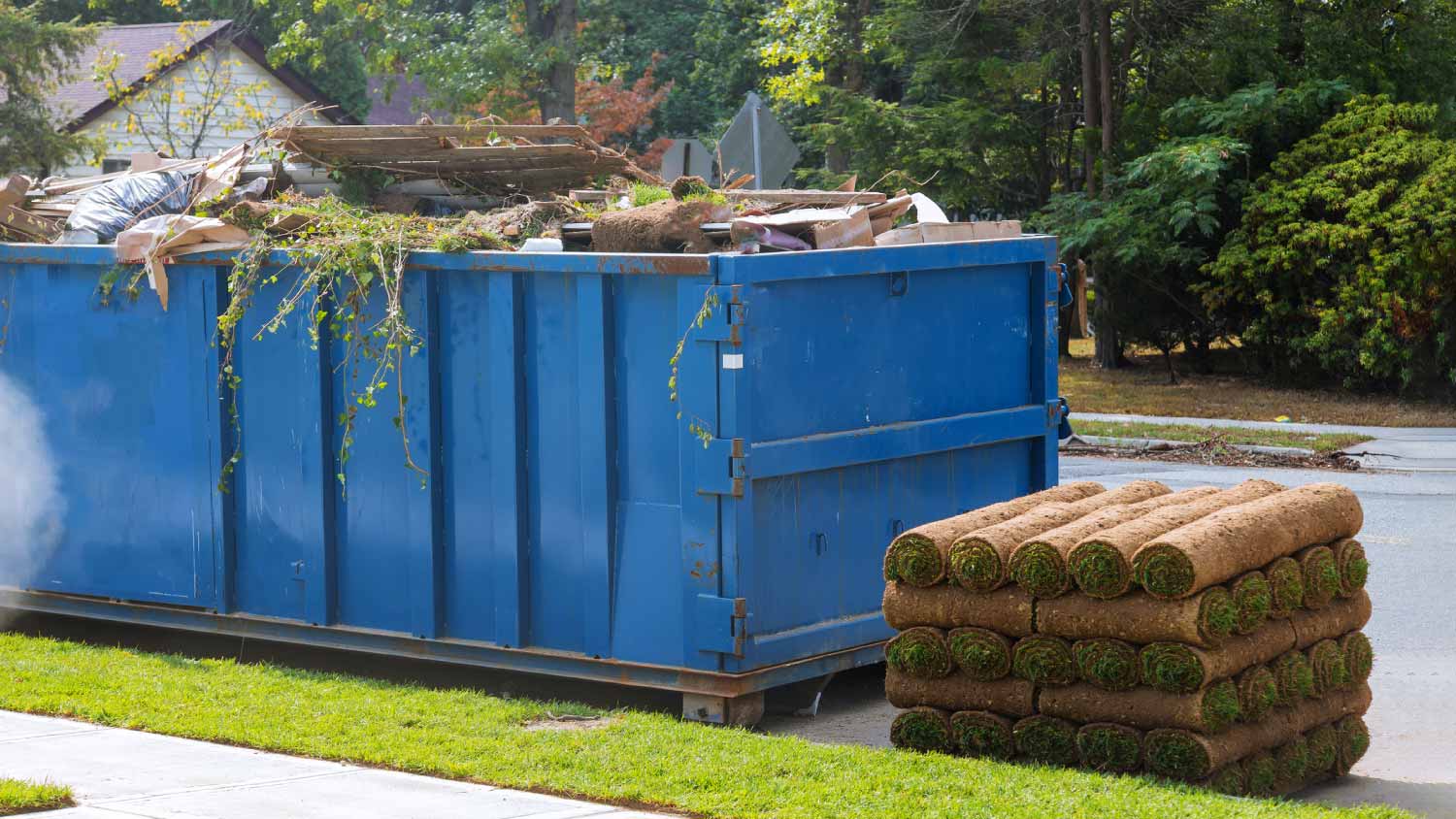
You might not think of a dumpster as somewhere to throw yard waste, but unless your area has regulations prohibiting it, you can use a dumpster to get rid of all kinds of yard waste, including:
Leaves
Branches
Sticks
Brush
Storm debris
You can also use a dumpster when updating your landscaping to dispose of pavers, bricks, edging, and fence components.
Residential dumpsters are commonly used for construction and remodeling debris. Construction materials can be heavy, so make sure you’re aware of the dumpster’s weight limit. If the load is too heavy, a local dumpster rental company won’t be able to safely haul it away, and you might have to pay additional fees to have the dumpster emptied and replaced.
Some construction and remodeling debris you can put in a dumpster includes:
Drywall
Cabinetry
Counters
Concrete blocks
Bricks
Lumber
Siding
Bathroom fixtures
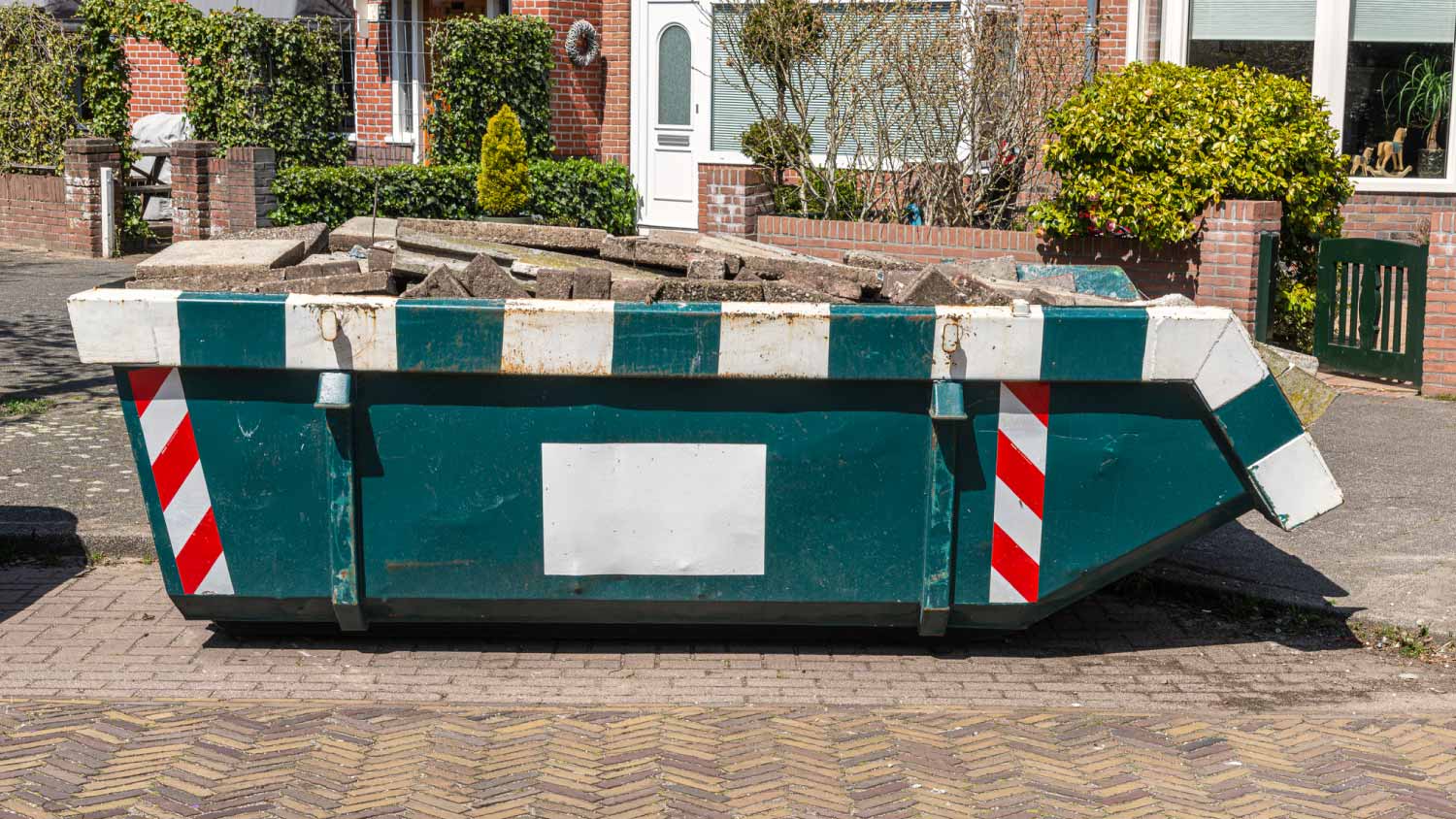
When it’s time for a new roof, a dumpster is the ideal way to dispose of old roofing materials. Shingles, plywood, underlayment, gutters, downspouts, and more can all be put in a dumpster. Remember that shingles are very heavy, though, so you’ll need to make sure you have the right size dumpster and don’t exceed its weight limit.
Most small appliances can be thrown away in a dumpster. Broken or unwanted vacuums, toasters, blenders, coffeemakers, and more can be disposed of safely in a dumpster.
Some appliances, like refrigerators, air conditioners, and washers, can’t be put in a dumpster or may need to be properly drained of hazardous fluids first. It’s best to check with the dumpster rental company for their policies about these items.
Tables, chairs, shelves, and other furniture made of wood, metal, or plastic can be put in a dumpster. You may not always be able to get rid of upholstered furniture this way—some areas have guidelines dictating how to dispose of these items. Ask the dumpster rental company if they prohibit upholstered furniture.
You can't just throw anything into a dumpster rental. Fluorescent light bulbs, paint, tires, household cleaners, and food waste are just a few commonly prohibited items. Ask dumpster rental companies what you can and can't throw into their dumpsters before renting.
A dumpster rental costs roughly $400 per week on average, though prices vary by dumpster size. For example, a small dumpster may cost just $200 per week, while an oversized dumpster may cost as much as $800 per week. Remember that there may be landfill or overfill fees if you fill the dumpster past its weight limit.
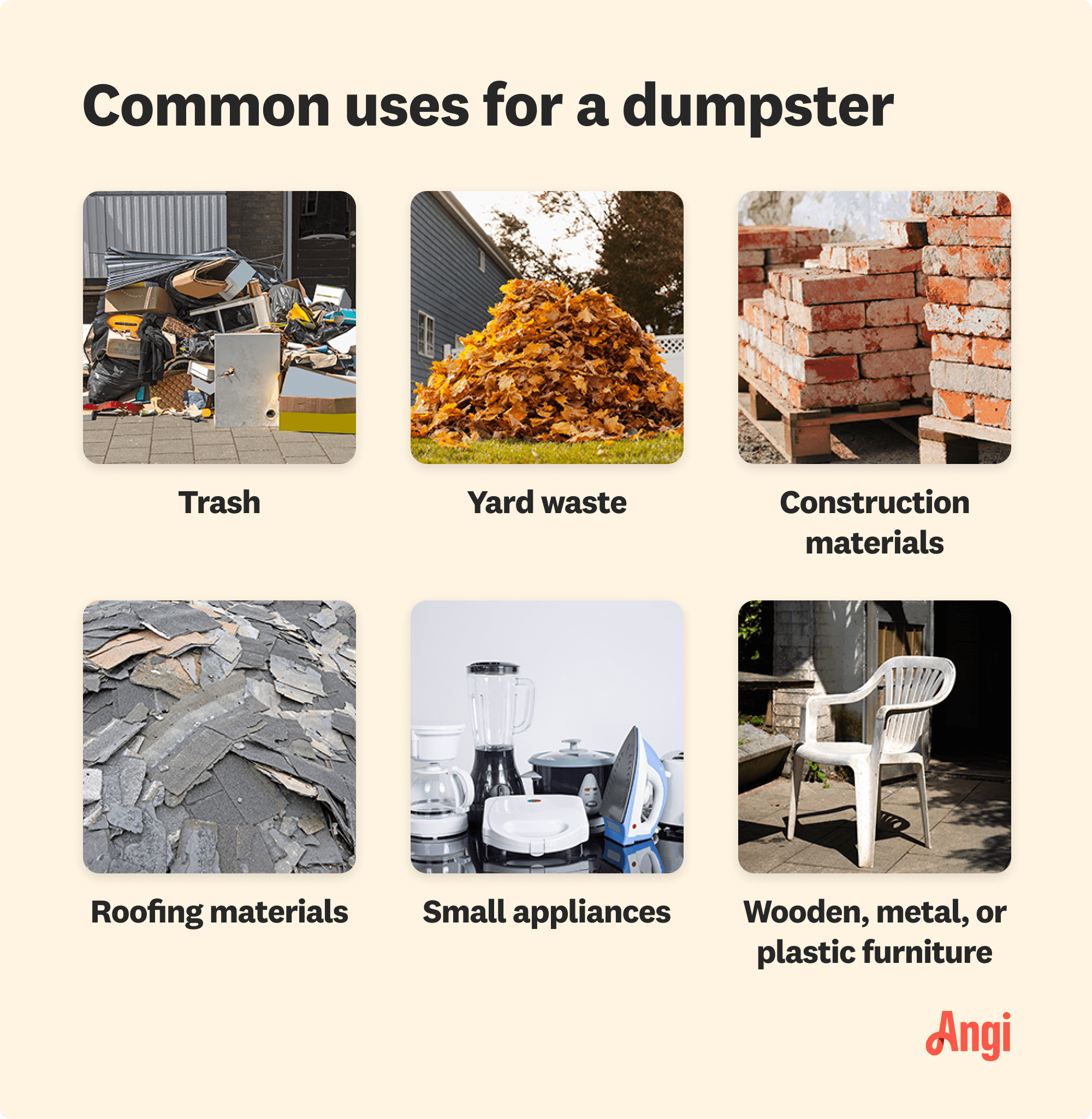
Junk hauling costs vary greatly by project. If your demo or cleanup is small and you have a large enough car or truck, you may be able to avoid renting a dumpster by hauling your junk to the landfill. In this case, you'll likely only have to pay a landfill fee.
On the other hand, large remodels or landscaping projects tend to involve a lot of junk that would be costly, time-consuming, and all-around inconvenient to haul yourself. You can either rent a dumpster or hire local junk removal pros, which normally costs about $130 to $370.
From average costs to expert advice, get all the answers you need to get your job done.

Renting a dumpster is more practical than you think. Use this guide to learn how much your rental will cost, the different dumpster types available, and tips to help you save.

A roll-off dumpster can help you dispose of large amounts of waste. Here’s what you need to know.

Learn how to rent a dumpster for your next home project or cleaning spree.

If you’re embarking on a junk removal project, it’s important to know where to put the dumpster. Read on for tips to find out which is best for you.
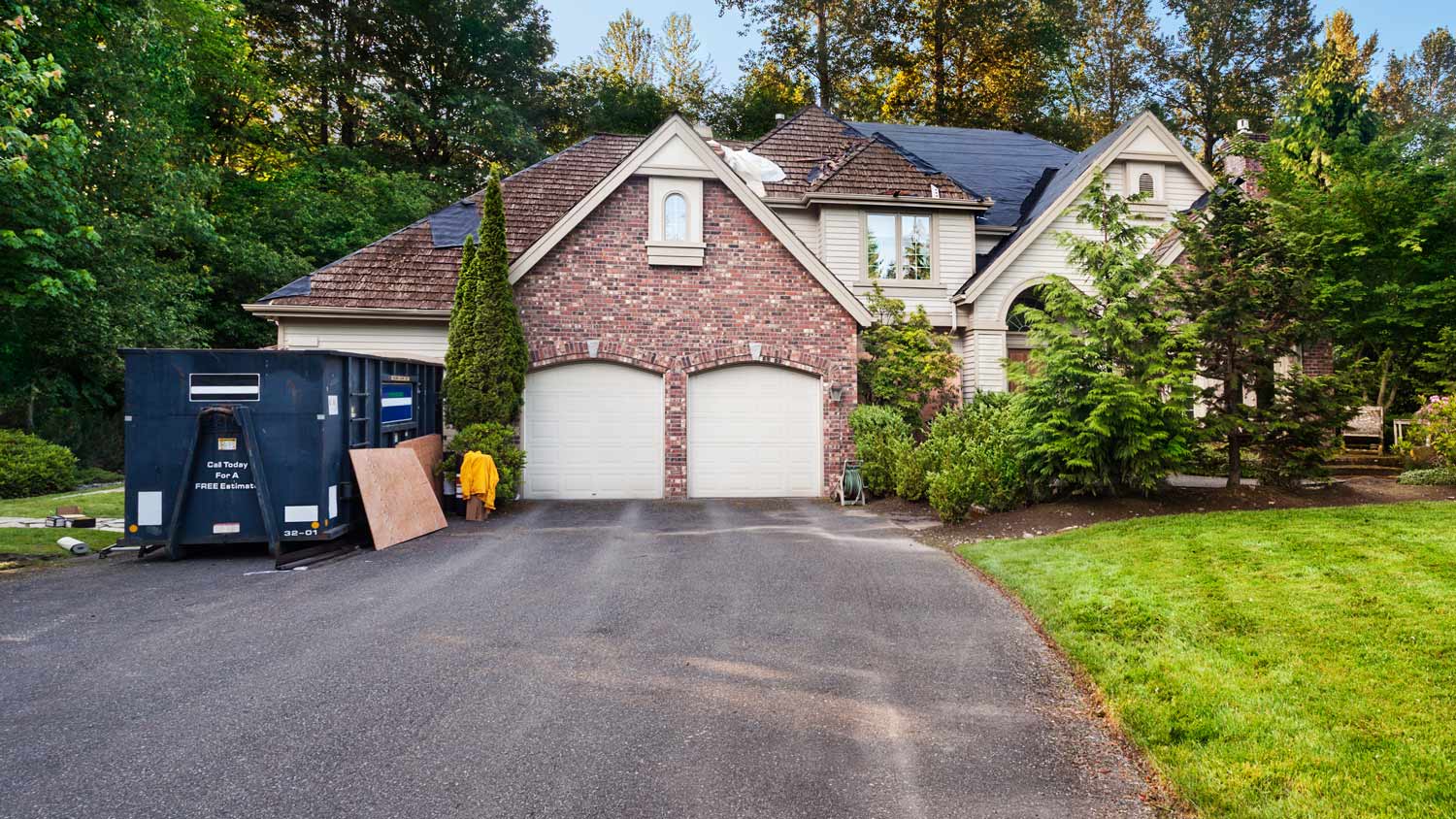
Dumpster rentals can range from days to months depending on your project and what you’re disposing of. Most homeowners rent a dumpster for one to two weeks.

Roll-off dumpster costs depend on size, rental duration, and location. Weight and the type of debris can impact cost, and you may need to pay for a permit.